Hidden ingredient in pure maple syrup? Yup, a defoamer! Ours is PUFA free.
posted on
June 6, 2025
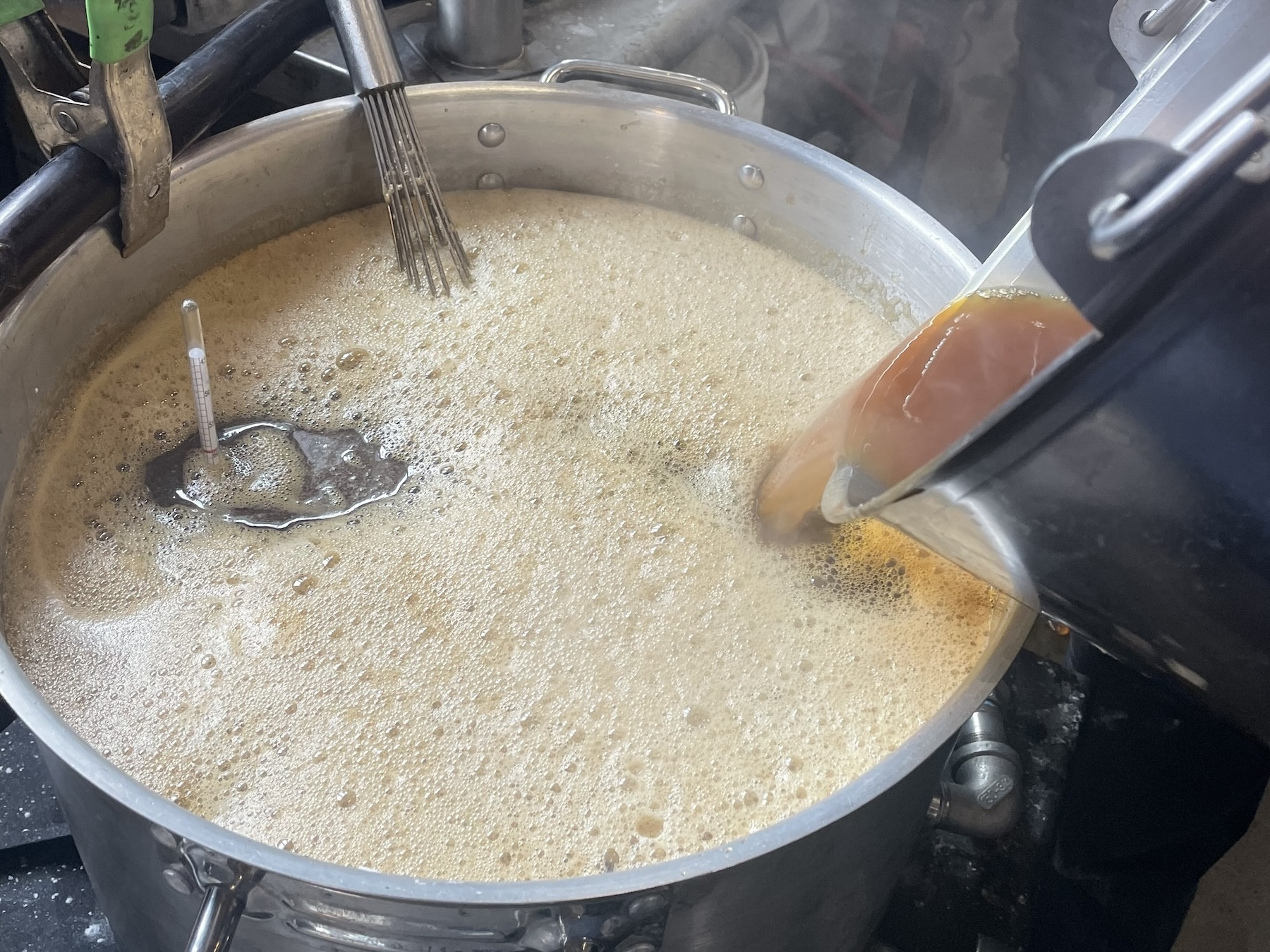
I know you've seen it advertised everywhere - "PURE MAPLE SYRUP". But, is it really and truly pure? Not exactly.
Why is maple syrup is advertised as "pure" anyway? Well, it's because it's being compared to the Aunt Jemima kind of syrup, which doesn't even have maple syrup in it! It's fake maple syrup made with corn syrup with colors, flavors, thickeners, and preservatives. It mimics maple syrup, but it's definitely not maple syrup.
So... for companies that are selling actual maple syrup (you know, the kind that's cooked down from the sweet sap from a maple tree), they like to differentiate their syrup from fake syrups. They do this by calling it "pure". I've even seen it as "100% pure".
But, that's not really true either. The dictionary definition of "pure" is "not mixed or adulterated with any other substance or material." Well, in order to make real maple syrup, you kinda need to do just that.
Enter defoamers...
Here's how maple syrup is made, including when defoamer is used.
First, you harvest the sap from the trees. This happens at a specific time of year. In early spring, as the weather starts to warm up, the sap starts flowing. Here are the lines that run through the maple forest in Vermont that our syrup comes from:

Then, the sap (which tastes like sweet water), is pumped into a big stainless steel tank:
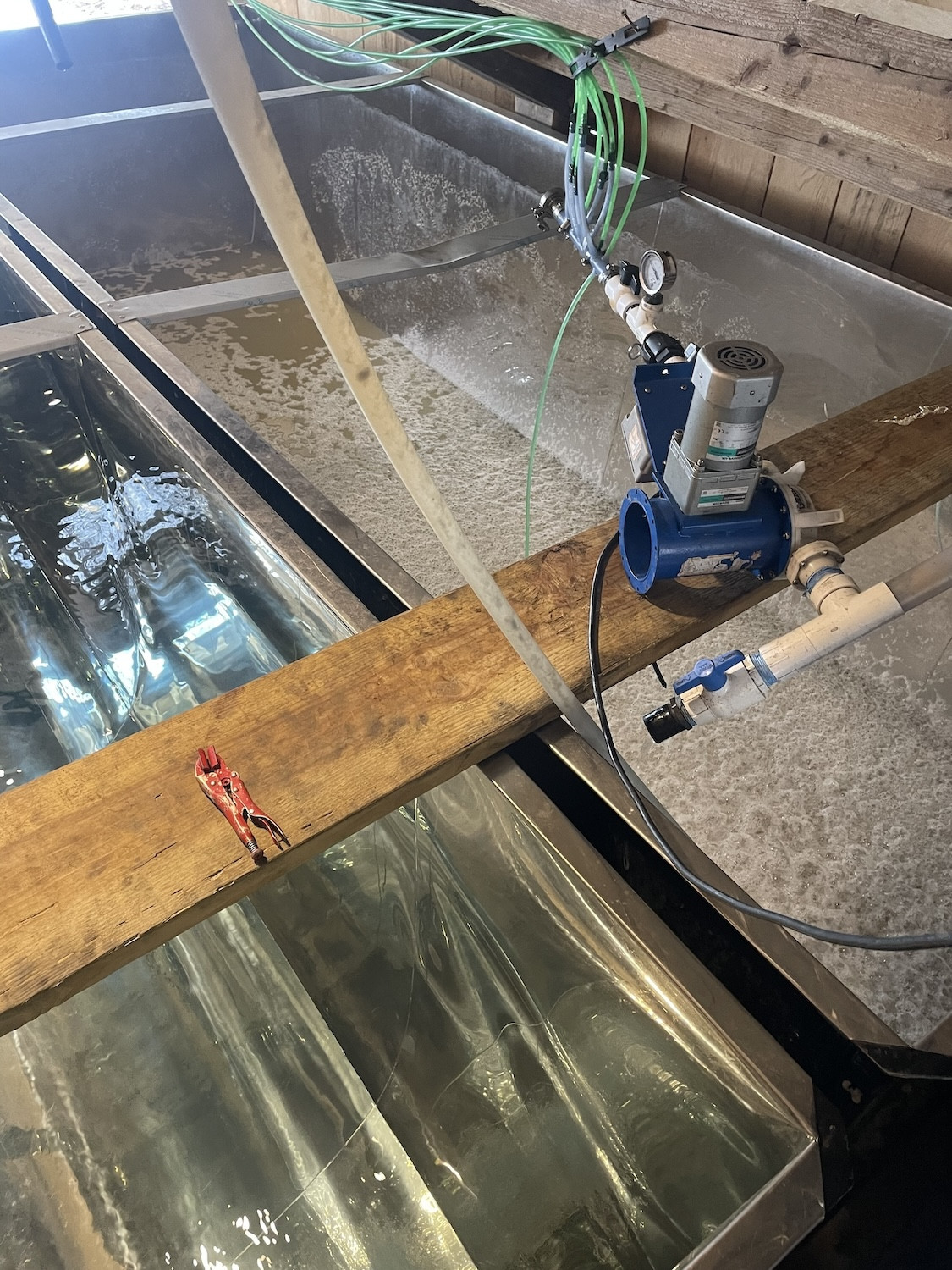
After that, it goes into another big stainless steel pot in the sugar shack (yup, that's what an old fashioned place that makes maple syrup is called). And then, the heat is turned on. Our maple syrup is cooked over a wood stove!
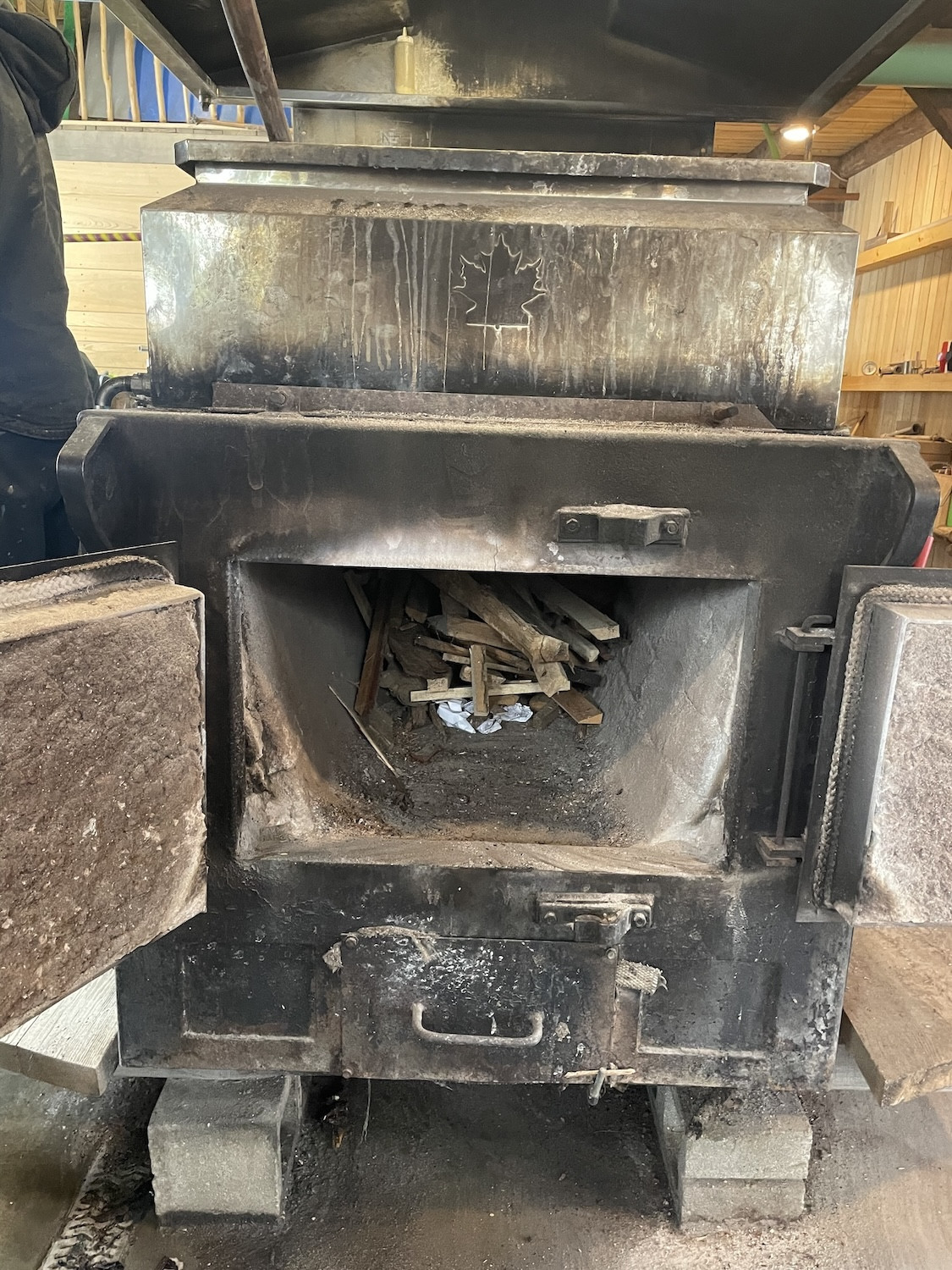
As the maple sap cooks down, it bubbles. Like a lot.
To prevent the pot from overflowing with maple lava, not only making a mess but also creating a dangerous situation, syrup makers use a little defoamer. A defoamer is a fat that breaks the surface tension on the bubbles. Only a little bit is needed.
*There are all kinds of defoamers, natural and absolutely not natural. But first, let's finish making the syrup. Keep scrolling to learn more about defoamers.
Here's what those bubbles look like as a defoamer is added:
When the bubbles are smaller and the syrup has cooked down to the perfect thickness and specific gravity, it's done! It's drained into another stainless steel pot.
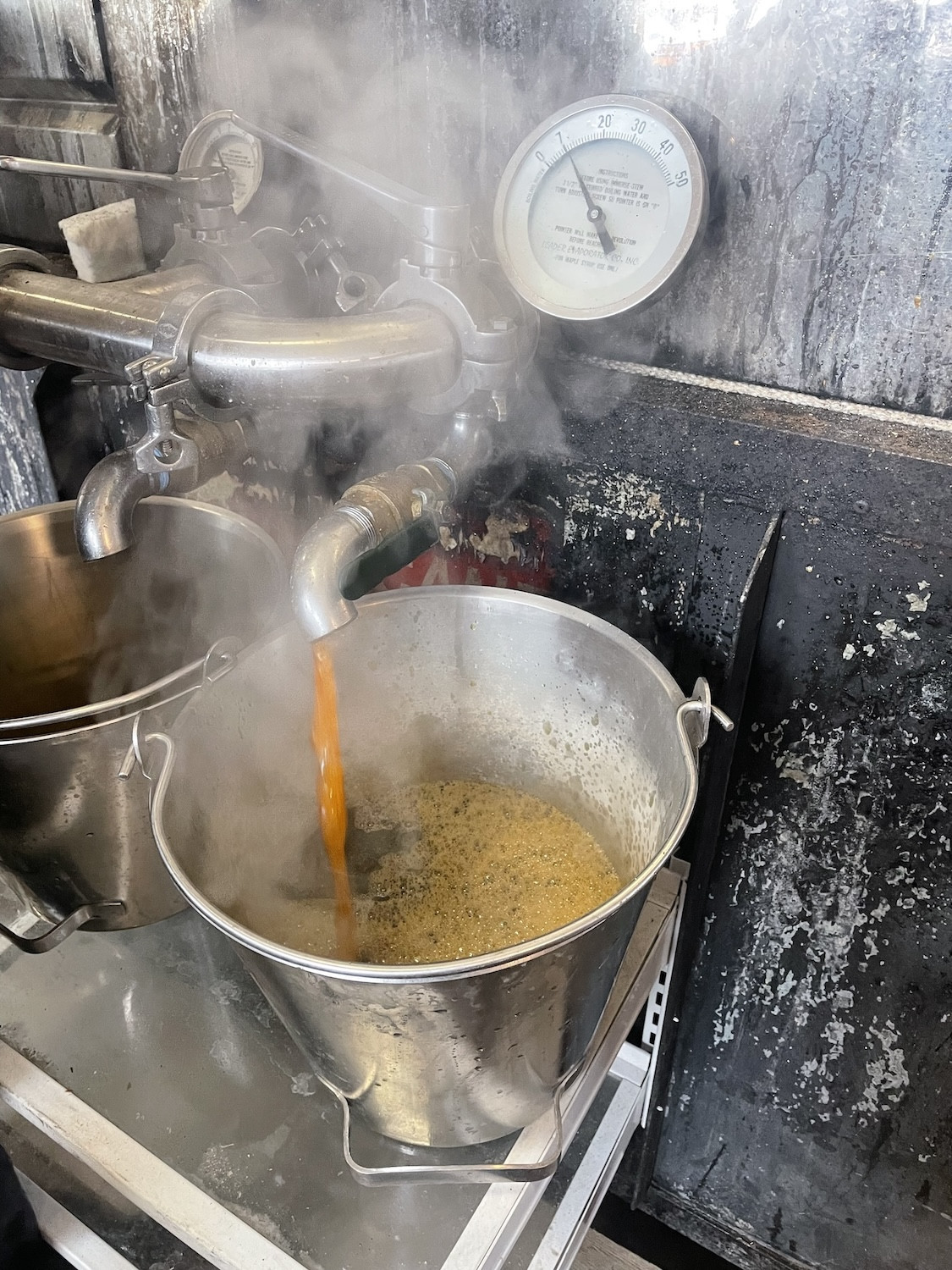
Final thickness and color testing is done before it's bottled. The Virkler family is serious about color distinctions. They always keep some super dark and super light syrup around to make it just right.

Why is maple syrup different shades anyway? It's a natural thing! It has to do with the changes in the sugars within the sap as the season changes.
As the temperature warms up, naturally occurring bacteria become active and break down the sugar into glucose and fructose. These simpler sugars caramelize more easily during boiling, making a darker syrup. That's why lighter syrup is generally made at the beginning of the season when it's colder. But, just like the weather, the color varies throughout the maple syrup season.
The Virkler family documents this every year. In the pic below, the first sap of the season is in the bottom left. And then every harvest after that goes to the right and then up to the next row. Pretty neat!
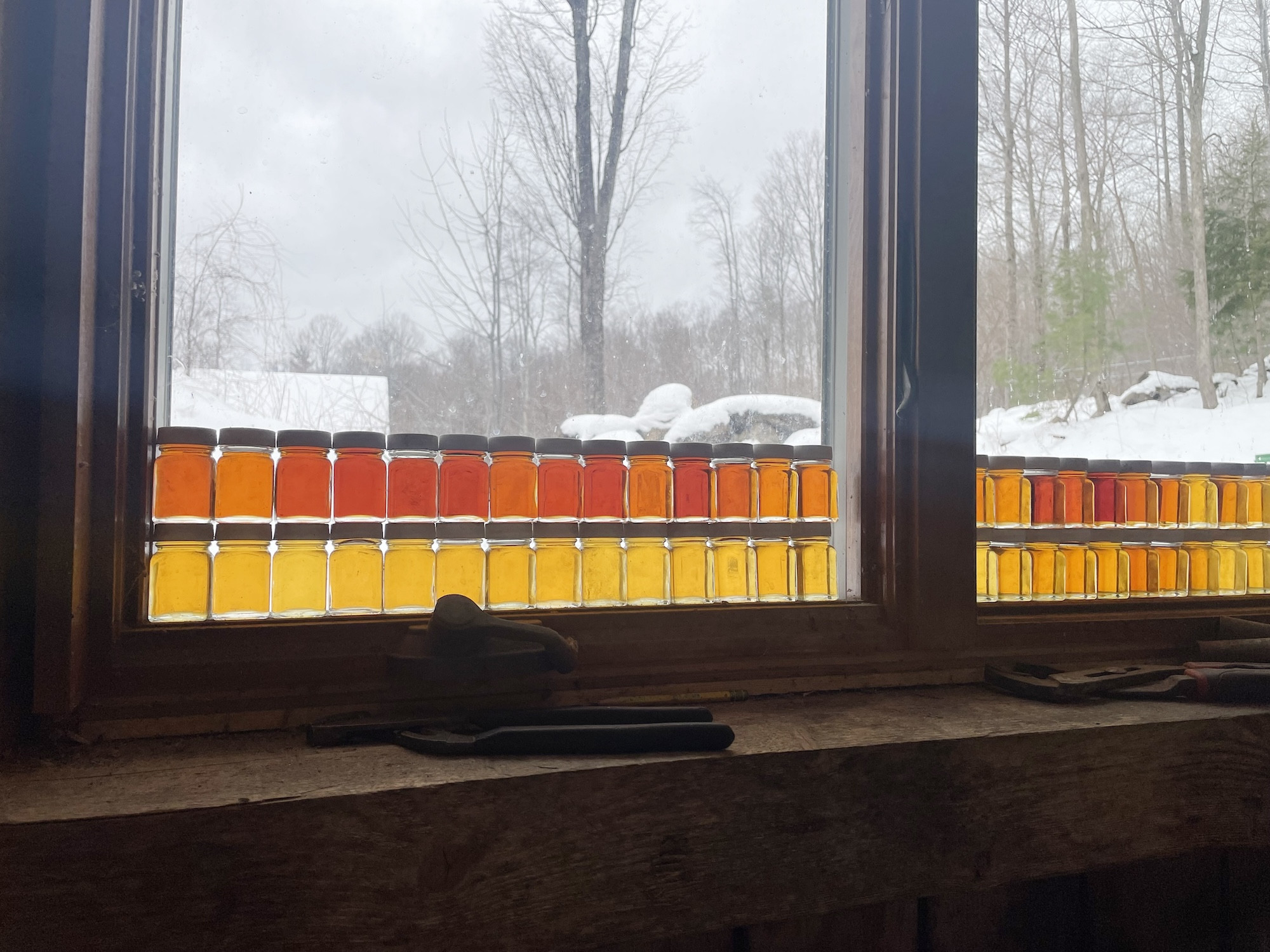
And voila! That's how maple syrup is made!
What's in a defoamer?
A defoamer is a fat. It disrupts surface tension, breaking those syrupy bubbles down, because it contains non-polar molecules that are attracted to water.
Conventional Defoamers
Conventional defoamers are a blend of who knows what kind of cheap oils. They can be mineral oils, silicone oils, vegetable oils (canola, soy, olive, etc), or other hydrophobic oils. Some contain up to 10% silicone. Did you know "pure" maple syrup can have that in it!?
Conventional defoamers are a lab and factory made thing. And you know what that means - the actual ingredients are proprietary. That's 100% allowed, especially since the defoamer ingredients don't need to be listed on the label. It's less than 1% and considered a trace ingredient.
Natural Defoamers
More natural defoamers are straight oils. For example, our old maple syrup used sunflower oil. I've seen other maple syrup makers use canola oil. But, the most common defoaming oils are seed oils, and that means PUFAs.
Natural No PUFA Defoamers
In an effort to reduce PUFAs whenever possible, we have a new no PUFA maple syrup! Virkler Farm & Forest uses organic coconut oil as their defoamer. We're so proud to offer it to you!
*It's important to note that a really tiny amount of defoamer is used. Whatever is left in the final syrup is a trace amount. But, as I say again and again, if there's a trace amount of something bad in everything you eat, is it a trace amount anymore?
So, what should you look for in a natural maple syrup?
For the most natural maple syrup, you can look for a few things:
- From a pristine forest, free of chemicals.
- No added colors, flavors, thickeners, or preservatives.
- Boiled with wood to prevent any unnatural fumes from contaminating the syrup.
- A natural defoamer is used.
- Bottled in glass. This is particularly important with maple syrup since it's typically bottled hot/warm.
Our maple syrup checks all those boxes!
Do you use maple syrup? Did you know about defoamers? What's important to you when choose natural foods?
I'd love to hear from you. Comment below or send us a message.
-----
PS: Did you know that the maple syrup we sell is also used in a bunch of our products? That includes our ice cream, egg custard, maple sausages, chocolate and strawberry syrups, and more!




